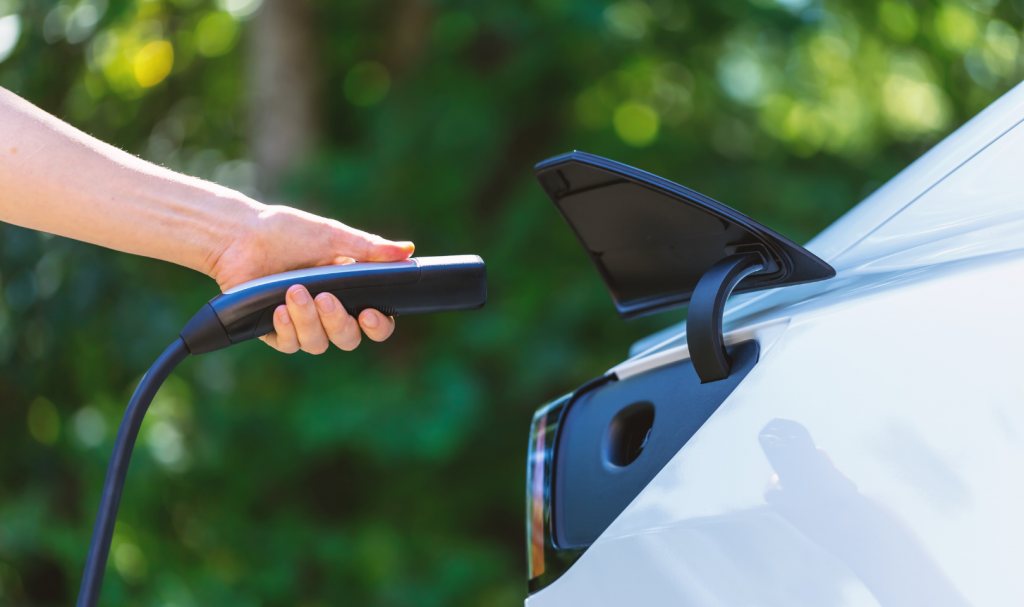Want to power your electric vehicle with solar? This blog post explains how many extra panels and batteries you need to do so.
We’ve received a lot of enquiries lately from customers interested in increasing their solar and battery capacity in preparation for a future EV purchase. So, what exactly is feasible when it comes to charging an electric vehicle (EV) with household solar?
Your solar system can be used to charge up an EV to some extent (enough to cover most daily commutes), but it’s very unlikely that you will be able to be 100% self-sufficient if you need to charge your car up in full every day.
Below we break down how much you can expect to charge from your solar – including how many panels and/or batteries are required to do so with different vehicles, as well as how the grid might allow you to charge your car at cheaper rates in the future.
Before we get to the detail, let’s start with the moral of the story: It is possible to get extra panels and batteries to cover most ordinary commutes, but you shouldn’t expect to be able to charge your EV in full using your household solar system.
There are two important points to consider here:
- It is unlikely that a household solar system would be large enough to power a home as well as fully charge an EV.
- Depending on how much you drive each day, you will most likely be able to cover most of your daily commutes using your solar power.
Now, let’s break down the details:
Solar for your home:
- A typical home uses around 20 kWh of electricity per day. (A kWh is a unit of electricity, much like petrol is measured in litres)
- A standard solar panel system to cover that usage is 5kW (16 panels) and generates an average of 20 kWh of electricity daily. If you want to use some of that electricity at night you can get a battery ranging from 5kWh to 15 kWh to store between 25% to 75% of that electricity, respectively.
How much extra solar would I need for a full EV charge?
- Electric vehicle batteries range from 30 kWh – 100+ kWh in size. For example:
- Nissan Leaf if fitted with a 40 kWh battery pack and have a range of around 270 km.
- Tesla’s sports cars house 100+ kWh battery packs and have a range of around 540 km (or more if you get a battery size upgrade)
In order to fully charge even the Nissan Leaf (one of the smallest EV batteries) during the day using solar power, households would need to add an additional 10kW (32 panels) to their solar system. That will produce an additional 40kWh/day which is the same amount of power required for a full car charge.
*Note: In some locations the grid may prevent you from installing more than 6kW of solar panels which would prevent you from being able to add extra panels to take care of an electric vehicle.
If you want to be able to charge your EV at night you would also need to add batteries, so that you can store your solar power for the evening. To provide a full charge, you would need 40kWh of battery storage as well.
Now, if you are looking at one of the EVs on the upper end of the spectrum, like Tesla, you’ll need 100kWh or more of extra solar electricity, which would be equal to an additional 25kW solar system (80 panels), and 100 kWh of battery storage if you want to charge it at night.
*Note: It is very rare that the grid will allow any home to install more than 15kW of solar panels. If you get a EV with a big battery like the Tesla sportscars, you will not be able to provide a full charge from solar because of this panel size limitation.
While it may be possible to get enough solar to charge a smaller EV like the Nissan Leaf in full each day, it is unlikely that you will completely drain your EV every day.
Instead of aiming to recharge a completely flat battery, you should endeavour to recharge your car from a typical day of driving around your community. This is much more achievable and won’t break the bank.
How much solar do I need to cover my daily driving needs?
Most people don’t drive 270km on a daily basis (the range of a Nissan Leaf), much less 540km (Tesla range) which means you will only need to recharge a portion of your EV’s battery each day. Based on Aussie statistics, most people commute between 10km/day to 60km/day.
If you drive 40 km/day, then you’d only be using around 15% of the battery of a Nissan Leaf or around 8% of a Tesla sportscar battery. In terms of kWh of electricity, you’d only need to have solar supply 6kWh/day for the Nissan Leaf, or 8kWh/day for the Tesla sportscar in order to recharge your EV from solar for that 40 km/day.
If your goal is to cover your daily EV driving with solar, then you can use the following guide for how many panels you would need:
- If you drive between 1km/day – 20km/day, add 1kW of panels for daytime charging + 4 kWh of battery storage if you want to charge your car at night.
- If you drive between 21km/day – 40km/day, add 2kW of panels for daytime charging + 8 kWh of battery storage if you want to charge your car at night.
- If you drive between 41km/day – 60km/day, add 3kW of panels for daytime charging + 12 kWh of battery storage if you want to charge your car at night.
- If you drive between 61km/day – 80km/day, add 4kW of panels for daytime charging + 16 kWh of battery storage if you want to charge your car at night.
- If you drive between 81km/day – 100km/day, add 5kW of panels for daytime charging + 20 kWh of battery storage if you want to charge your car at night.
Use our handy online calculator and the above reference guide to see what system would best suit your driving habits.
Note: If you’re unsure how many km/day you drive, simply write down the km on your car’s odometer now then check it again in 7 days to find the difference, then divide that by 7 to get your average daily km driven.
Renewable energy is never a ‘one size fits all’ approach. We’re moving towards a future where EV charging stations will be common fixtures in our communities – they will be found at our workplaces, our shopping centres, along our highways and of course within our homes, potentially as part of community virtual power plants. So, if you’re considering solar with an EV future in mind – make sure you consider the bigger picture, and plan for the future.
Interested in finding our more? Click here to book a free consultation with one of our solar experts.
*Update on 4 July, 2019
A few people have asked us about the lifetime carbon impact of petrol cars vs. electric vehicles so we did a bit of research and the results are clear – electric vehicles are significantly better for the environment than petrol cars with less than half of the overall carbon impact. That includes consideration for the impact of building the cars and the fuel source to run them. A few links if you’re interested are here and here.




